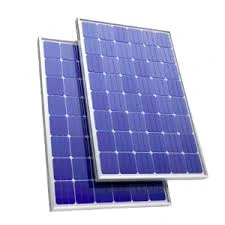solar panel average size
Understanding the Average Size of Solar Panels
As the world moves towards sustainable and renewable energy sources, solar power has become a focal point in the quest for clean energy. One of the key components of a solar energy system is the solar panel. Understanding the average size of solar panels is essential for homeowners and businesses considering the installation of solar energy systems. This article explores the typical dimensions, factors affecting the size, and implications for solar installations.
What is the Average Size of a Solar Panel?
Most residential solar panels on the market today have standard dimensions. Typically, a solar panel measures about 65 inches by 39 inches, equating to roughly 17.6 square feet, while commercial solar panels can be larger, reaching about 77 inches by 39 inches, or approximately 20.3 square feet. When considering the size in terms of wattage output, residential panels generally range from 250 to 400 watts per panel.
Factors Affecting Solar Panel Size
The size of a solar panel can be influenced by several factors
1. Technology Type Different types of solar technology, such as monocrystalline, polycrystalline, or thin-film, vary in efficiency and, consequently, size. Monocrystalline panels are typically more efficient, meaning they can generate more power per square foot, often leading to a smaller size for the same output compared to polycrystalline options.
2. Power Output Requirements The size of the solar panel system needed reflects the energy consumption of the household or business. Larger systems require more panels, increasing the overall area needed for installation. For instance, a home that consumes 1,000 kWh per month might require around 25 panels, depending on the efficiency and output of each panel.
3. Roof Space The available space for solar panel installation significantly influences the number and ultimately the size of the panels installed. Roof orientation, shading from trees or buildings, and roof size all play crucial roles. If space is limited, homeowners might opt for higher-efficiency panels, which can produce more power despite having a smaller footprint.
solar panel average size

4. Local Regulations and Incentives Some regions implement regulations that dictate the maximum allowable size for solar panel installations or incentives that influence panel size choices. Understanding these regulations is vital for an optimal installation.
Implications of Solar Panel Size
The size of solar panels can have several implications for installation and overall system efficiency
1. Installation Space Homeowners must calculate how much roof space they have and how many panels can realistically fit without compromising roof integrity or aesthetics.
2. Aesthetic Considerations Larger panels offer the potential for higher energy production in fewer panels, which can sometimes lead to a sleeker-looking installation. However, homeowners may need to balance efficiency with appearance, choosing between fewer large panels or more smaller ones depending on personal preference.
3. Financial Considerations The cost of solar systems can soar with the number of panels installed. Larger installations can lead to higher upfront costs, but they may be more economical in the long run due to increased energy production and potential savings on electricity bills.
4. Energy Independence The more solar panels installed (within space and regulatory bounds), the greater the potential for energy independence. This can be particularly advantageous as energy prices fluctuate and environmental concerns drive the need for sustainable practices.
Conclusion
Understanding the average size of solar panels is critical for anyone considering the transition to solar energy. With standard panel sizes ranging from 17.6 to 20.3 square feet, and varying based on efficiency and technology, consumers must carefully evaluate their individual energy needs, available space, and potential regulations. By doing so, they can tailor their solar energy system effectively, embracing the many environmental and economic benefits that solar power offers. As technology continues to advance, the size and efficiency of solar panels will likely evolve, making solar energy an even more appealing option for a sustainable future.
-
Understanding the Advantages of Solar String Inverters for Your Energy SystemNewsApr.29,2025
-
Choosing the Right PV Inverter: A Comprehensive GuideNewsApr.29,2025
-
The Future of Solar Power: Exploring Bifacial Solar PanelsNewsApr.29,2025
-
The Complete Guide to Solar Panels: Efficiency, Cost, And InstallationNewsApr.29,2025
-
The Best Options for Efficiency and Cost-EffectivenessNewsApr.29,2025
-
Harnessing the Power of Off-Grid Solar Inverters for Energy IndependenceNewsApr.29,2025







